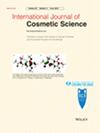Understanding the dandruff flare-up: A cascade of measurable and perceptible changes to scalp health
Abstract
Objective
Clinical studies assessing the dandruff condition typically focus on the therapeutic resolution of the signs and symptoms of dandruff, starting with a symptomatic scalp as a baseline. The reverse, the progression of events leading to a scalp flare-up after stopping the use of an anti-dandruff (AD) shampoo, is poorly understood. This study explored onset time and progression of the signs and symptoms of dandruff in individuals who stop using an AD shampoo.
Methods
This randomized, double-blind, parallel design study recruited self-identified, scalp-concerned adults. After a 2-week run-in with an AD shampoo, participants were randomized into two groups: The first continued using the AD shampoo and the second switched to a cosmetic (non-AD) shampoo. At baseline and defined intervals over the 28-day study period, objective measures of scalp condition were investigated: expert-assessed flaking, scalp impedance, and biomarkers. These were combined with self-assessments of scalp condition. A Stochastic Mixed-Effect Random Forest (SMERF) machine-learning algorithm was explored to model time-varying technical measurements and daily self-assessment responses from participants.
Results
Switching from an AD shampoo to a non-AD shampoo resulted in increased scalp Malassezia load, degree of flaking, barrier disruption, and inflammatory and oxidative stress biomarkers compared to those maintaining AD shampoo usage. Signs of declining scalp condition (histamine, complement component C3) were observed as early as 3 days after ceasing AD shampoo usage despite no statistical increase in flaking (ASFS) until around 3 weeks of using a non-AD shampoo. These changes were accompanied by self-perceived itching and flaking, reported to be significantly worse in those using the non-AD shampoo compared to the AD shampoo at the end of the study. No statistically significant increase from baseline was observed for any objective measure in the AD shampoo group. In the SMERF model, markers of inflammation, oxidative stress, and Malassezia load were predictive of self-perceived scalp attributes.
Conclusion
For the first time, a comprehensive understanding of changes that occur as scalp condition goes from asymptomatic to dandruff-affected has been established. For scalp-concerned individuals, regular, sustained use of an AD treatment promotes optimal scalp health. When switching to a non-AD shampoo, scalp health deteriorates rapidly, even before visible flakes appear.


 求助内容:
求助内容: 应助结果提醒方式:
应助结果提醒方式:


